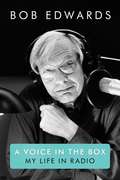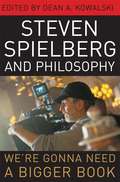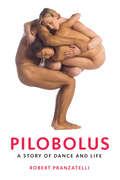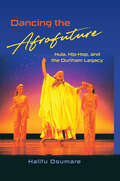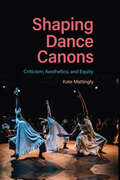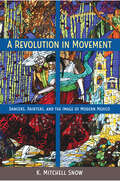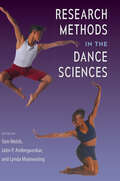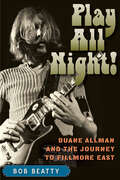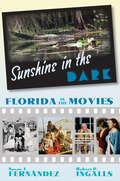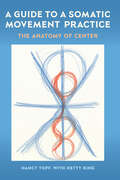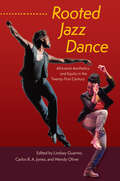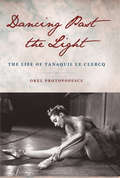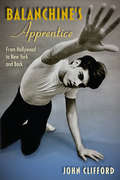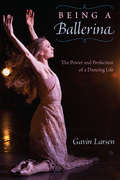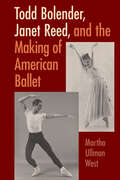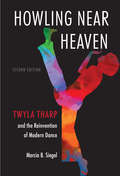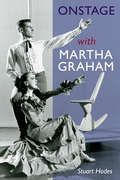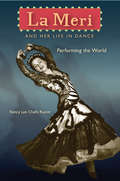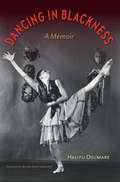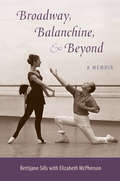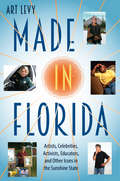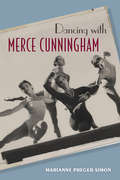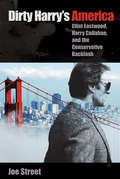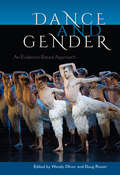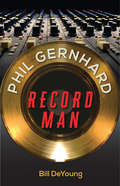- Table View
- List View
A Voice in the Box: My Life in Radio
by Bob EdwardsThe host of The Bob Edwards Show and Bob Edwards Weekend on Sirius XM Radio, Bob Edwards became the first radio personality with a large national audience to take his chances in the new field of satellite radio. The programs' mix of long-form interviews and news documentaries has won many prestigious awards. For thirty years, Louisville native Edwards was the voice of National Public Radio's daily newsmagazine programs, co-hosting All Things Considered before launching Morning Edition in 1979. These programs built NPR's national audience while also bringing Edwards to national prominence. In 2004, however, NPR announced that it would be finding a replacement for Edwards, inciting protests from tens of thousands of his fans and controversy among his listeners and fellow broadcasters. Today, Edwards continues to inform the American public with a voice known for its sincerity, intelligence, and wit. In A Voice in the Box: My Life in Radio, Edwards recounts his career as one of the most important figures in modern broadcasting. He describes his road to success on the radio waves, from his early days knocking on station doors during college and working for American Forces Korea Network to his work at NPR and induction into the National Radio Hall of Fame in 2004. Edwards tells the story of his exit from NPR and the launch of his new radio ventures on the XM Satellite Radio network. Throughout the book, his sharp observations about the people he interviewed and covered and the colleagues with whom he worked offer a window on forty years of American news and on the evolution of public journalism. A Voice in the Box is an insider's account of the world of American media and a fascinating, personal narrative from one of the most iconic personalities in radio history.
Steven Spielberg and Philosophy: We're Gonna Need a Bigger Book
by Dean A. KowalskiHas any film director had a greater impact on popular culture than Steven Spielberg? Whether filming Holocaust heroes and villains, soldiers, dinosaurs, extraterrestrials, or explorers in search of the Holy Grail, Spielberg has given filmgoers some of the most memorable characters and wrenching moments in the history of cinema. Whatever his subject -- war, cloning, slavery, terrorism, or adventure -- all of Spielberg's films have one aspect in common: a unique view of the moral fabric of humanity. Dean A. Kowalski's Steven Spielberg and Philosophy is like a remarkable conversation after a night at the movie theater, offering new insights and unexpected observations about the director's most admired films. Some of the nation's most respected philosophers investigate Spielberg's art, asking fundamental questions about the nature of humanity, cinema, and Spielberg's expression of his chosen themes. Applying various philosophical principles to the movies, the book explores such topics as the moral demands of parenthood in War of the Worlds; the ultimate unknowability of the "other" in Close Encounters of the Third Kind and Schindler's List; the relationship between nature and morality in Jurassic Park; the notion of consciousness in A. I. : Artificial Intelligence; issues of war theory and ethics in Munich; and the foundation of human rights in Amistad. Impressive in scope, this volume illustrates the philosophical tenets of a wide variety of thinkers from Plato to Aquinas, Locke, and Levinas. Contributors introduce readers to philosophy while simultaneously providing deeper insight into Spielberg's approach to filmmaking. The essays consider Spielberg's movies using key philosophical cornerstones: metaphysics, epistemology, ethics, axiology, aesthetics, and political philosophy, among others. At the same time, Steven Spielberg and Philosophy is accessible to those new to philosophy, using the philosophical platform to ponder larger issues embedded in film and asking fundamental questions about the nature of cinema and how meanings are negotiated. The authors contend that movies do not present philosophy -- rather philosophy is something viewers do while watching and thinking about films. Using Spielberg's films as a platform for discussing these concepts, the authors contemplate questions that genuinely surprise the reader, offering penetrating insights that will be welcomed by film critics, philosophers, and fans alike.
Pilobolus: A Story of Dance and Life
by Robert PranzatelliThe dynamic history of the innovative, beloved, and critically acclaimed dance theater company, with revelatory behind-the-scenes details of its creators and significant works The ingeniously innovative and enduringly popular American dance theatre company Pilobolus has helped redefine, remix, and rejuvenate the essence of dance with its eclectic sensibility and daring athleticism. Now, for the first time, the story of Pilobolus, from its counterculture origins through its pop-culture triumphs and contemporary global acclaim, is revealed in a book that will entrance longtime admirers and newcomers alike. Written with unprecedented access to the company—with insights from unpublished archival materials and interviews with its founders, dancers, and current artistic directors—and featuring both classic and never-before-seen photos, Pilobolus offers previously untold details about the group’s history and the creation of its most significant works. Robert Pranzatelli describes the company's genesis in a Dartmouth dance class in 1971 and how Pilobolus revolutionized dance with its blend of sensuality, physical achievement, and visual wit. In these pages, the troupe performs on Broadway, travels the world, and by the late 1980s secures a place in dance history, while its growth is marked by periods of internal conflict, challenges, and change. As Pilobolus continues to morph, invent, and thrive with the arrival of new artists and collaborators, its story encompasses love, loss, grief, and rebirth, as well as insights into the secrets of the creative process—how performers and choreographers think and work. More than a history, Pilobolus is a narrative of life and art, and the vitality that infuses and inspires both when they align and inhabit each other.
Dancing the Afrofuture: Hula, Hip-Hop, and the Dunham Legacy
by Halifu Osumare<p class="MsoNormal" style="margin-bottom:0in;margin-bottom:.0001pt;line-height: normal;mso-pagination:none;mso-layout-grid-align:none;text-autospace:none"><span style="font-size:12.0pt;font-family: "Times New Roman",serif">A Black dancer chronicles her career as a scholar writing the stories of global hip-hop and Black culture <p class="MsoNormal" style="margin-bottom:0in;margin-bottom:.0001pt;line-height: normal;mso-pagination:none;mso-layout-grid-align:none;text-autospace:none"> <p class="MsoNormal" style="margin-bottom:0in;margin-bottom:.0001pt;line-height: normal;mso-pagination:none;mso-layout-grid-align:none;text-autospace:none">Dancing the Afrofuture is the story of a dancer with a long career of artistry and activism who transitioned from performing Black dance to writing it into history as a Black studies scholar. Following the personal journey of her artistic development told in Dancing in Blackness, Halifu Osumare now reflects on how that first career—which began during the 1960s Black Arts Movement—has influenced her growth as an academic, tracing her teaching and research against a political and cultural backdrop that extends to the twenty-first century with Black Lives Matter and a potent speculative Afrofuture. <p class="MsoNormal" style="margin-bottom:0in;margin-bottom:.0001pt;text-indent: .5in;line-height:normal">Osumare describes her decision to step away from full-time involvement in dance and community activism to earn a doctorate in American studies from the University of Hawai‘i. She emulated the model of her mentor Katherine Dunham by studying and performing hula, and her research on hip-hop youth culture took her from Hawai‘i to Africa, Europe, and South America as a professor at the University of California, Davis. Throughout her scholarly career, Osumare has illuminated the resilience of African-descendant peoples through a focus on performance and the lens of Afrofuturism. <p class="MsoNormal" style="margin-bottom:0in;margin-bottom:.0001pt;text-indent: .5in;line-height:normal">Respected for her work as both professional dancer and trailblazing academic, Osumare shares experiences from her second career that show the potential of scholarship in revealing and documenting underrecognized stories of Black dance and global pop culture. In this memoir, Osumare dances across several fields of study while ruminating on how the Black past reveals itself in the Afro-present that is transforming into the Afrofuture. <p class="MsoNormal" style="margin-bottom:0in;margin-bottom:.0001pt;line-height: normal"> <p class="MsoNormal" style="margin-bottom:0in;margin-bottom:.0001pt;line-height: normal">Publication of this work made possible by a Sustaining the Humanities through the American Rescue Plan grant from the National Endowment for the Humanities and a University of California, Davis Edward A. Dickson Emeriti Professorship Award.
Shaping Dance Canons: Criticism, Aesthetics, and Equity
by Kate MattinglyExamining a century of dance criticism in the United States and its influence on aesthetics and inclusion Dance criticism has long been integral to dance as an art form, serving as documentation and validation of dance performances, yet few studies have taken a close look at the impact of key critics and approaches to criticism over time. The first book to examine dance criticism in the United States across 100 years, from the late 1920s to the early twenty-first century, Shaping Dance Canons argues that critics in the popular press have influenced how dance has been defined and valued, as well as which artists and dance forms have been taken most seriously. Kate Mattingly likens the effect of dance writing to that of a flashlight, illuminating certain aesthetics at the expense of others. Mattingly shows how criticism can preserve and reproduce criteria for what qualifies as high art through generations of writers and in dance history courses, textbooks, and curricular design. She examines the gatekeeping role of prominent critics such as John Martin and Yvonne Rainer while highlighting the often-overlooked perspectives of writers from minoritized backgrounds and dance traditions. The book also includes an analysis of digital platforms and current dance projects—On the Boards TV, thINKingDANCE, Black Dance Stories, and amara tabor-smith’s House/Full of BlackWomen—that challenge systemic exclusions. In doing so, the book calls for ongoing dialogue and action to make dance criticism more equitable and inclusive.
A Revolution in Movement: Dancers, Painters, and the Image of Modern Mexico (Dancers, Painters, and the Image of Modern Mexico)
by K. Mitchell SnowHonorable Mention, Latin American Studies Association Mexico Section Best Book in the HumanitiesHow collaborations between dancers and painters shaped cultural identity in MexicoA Revolution in Movement is the first book to illuminate how collaborations between dancers and painters shaped Mexico’s postrevolutionary cultural identity. K. Mitchell Snow traces this relationship throughout nearly half a century of developments in Mexican dance—the emulation of Diaghilev’s Ballets Russes in the 1920s, the adoption of U.S.-style modern dance in the 1940s, and the creation of ballet-inspired folk dance in the 1960s.Snow describes the appearances in Mexico by Russian ballerina Anna Pavlova and Spanish concert dancer Tortóla Valencia, who helped motivate Mexico to express its own national identity through dance. He discusses the work of muralists and other visual artists in tandem with Mexico’s theatrical dance world, including Diego Rivera’s collaborations with ballet composer Carlos Chávez; Carlos Mérida’s leadership of the National School of Dance; José Clemente Orozco’s involvement in the creation of the Ballet de la Ciudad de México; and Miguel Covarrubias, who led the "golden age" of Mexican modern dance. Snow draws from a rich trove of historical newspaper accounts and other contemporary documents to show how these collaborations produced an image of modern Mexico that would prove popular both locally and internationally and continues to endure today.
Research Methods in the Dance Sciences
by Tom Welsh, Jatin P. Ambegaonkar, and Lynda MainwaringA comprehensive guide to conducting empirical research in dance Research Methods in the Dance Sciences introduces concepts and practices that support effective, empirical research in the dance sciences, including medical science. A valuable new resource for this growing field, this book provides foundational knowledge for anyone who wants to understand, apply, and conduct research with dancers and proposes ways to facilitate more collaboration between the many disciplines that often overlap in this area.In this volume, pioneers of dance medicine and science guide readers through the stages of the research process. They address topics such as choosing a research question, writing a literature review, developing a framework and methodology, influencing the field, and progressing in a research career. Offering dance-specific examples as illustrations, this volume provides clear and instructive strategies for developing a solid repertoire of research skills to examine dance and movement-centered activities. It is ideal for practicing and aspiring dancers, teachers, and clinicians in fields including exercise physiology, motor learning, behavioral sciences, food sciences, medicine, psychology, and somatics who are interested in dance science research.
Play All Night!: Duane Allman and the Journey to Fillmore East
by Bob BeattyThe origin story of a groundbreaking album The 1971 Allman Brothers Band album At Fillmore East was a musical manifesto years in the making. In Play All Night!, Bob Beatty dives deep into the motivations and musical background of band founder Duane Allman to tell the story of what made this album not just a smash hit, but one of the most important live rock albums in history. Featuring insights from bootleg tapes, radio ads, early reviews, never-before-published photos, and the memories of band members, fans, and friends, Beatty chronicles how Allman rejected the traditional route of music business success—hit singles and record sales—and built a band that was at its best jamming live on stage, feeding off the crowd’s energy, and pushing each other to new heights of virtuosic improvisation. Every challenge, from recruiting a group of relatively unknown but established musicians like Jaimoe and Dickey Betts, touring the American South as an interracial band, and the failure of their first two studio albums, sharpened Allman’s determination to pursue the band’s truly unique sound. He made a bold choice—to record their next album live at Bill Graham’s famous concert hall in New York’s Lower East Side, a gamble that launched a new strand of American music to the top of the charts. Four days after the album went gold, Duane Allman was killed in a motorcycle accident. He was 24. This book explores how At Fillmore East cemented Allman’s legacy as a strong-willed, self-taught visionary, giving fans of Southern rock and all readers interested in the role of rock music in American popular culture a new appreciation for this pathbreaking album.
Sunshine in the Dark: Florida in the Movies
by Susan J. Fernandez Robert P. IngallsFlorida has been the location and subject of hundreds of feature films, from Cocoanuts (1929) to Monster (2004). Portraying the state and its people from the silent era to the present, these films have explored the multitude of Florida images and cliches that have captured the public's imagination--a nature lover's paradise, a wildlife refuge, a tourist destination, home to the "cracker," and a haven for the retired, the rich, the immigrant, and the criminal. Sunshine in the Dark is the first complete study of how the movie industry has immortalized Florida’s extraordinary scenery, characters, and history on celluloid.Historians Fernández and Ingalls have identified more than 300 films about Florida--many of them shot on location in the state--to analyze how filmmakers from the Marx Brothers and John Huston to Oliver Stone and Francis Ford Coppola have portrayed the state and its people. Prior to the 1960s, cinematic trips to Florida usually brought happy endings in movies like Moon Over Miami (1942), but since the 1970s, films like Scarface (1982) have emphasized the state's menacing aspects.In the authors' analysis of the films, which examines location settings, plotlines, and characters, they find a bevy of Florida stereotypes among the leading characters--from the struggling crackers in The Yearling (1946) to the drug-addicted con man in Adaptation (2002). Featuring more than 100 still photographs from movies, as well as filmographies by year and genre, the book is an encyclopedic resource for movie fans and anyone interested in Florida popular culture.
A Guide to a Somatic Movement Practice: The Anatomy of Center
by Nancy TopfAn introduction to embodied movement through the work of a dance education pioneer In this introduction to the work of somatic dance education pioneer Nancy Topf (1942–1998), readers are ushered on a journey to explore the movement of the body through a close awareness of anatomical form and function. Making available the full text of Topf’s The Anatomy of Center for the first time in print, this guide helps professionals, teachers, and students of all levels integrate embodied, somatic practices within contexts of dance, physical education and therapy, health, and mental well-being. Hetty King, a movement educator certified in the Topf Technique®, explains how the ideas in this work grew out of Topf’s involvement in developing Anatomical Release Technique—an important concept in contemporary dance—and the influence of earlier innovators Barbara Clark and Mabel Elsworth Todd, founder of the approach to movement known as “ideokinesis.” Featuring lessons written as a dialogue between teacher, student, and elements of the body, Topf’s material is accompanied by twenty-one activities that allow readers to use the book as a self-guided manual. A Guide to a Somatic Movement Practice is a widely applicable entry point into the tradition of experiential anatomy and its mindful centering of the living, breathing body.
Rooted Jazz Dance: Africanist Aesthetics and Equity in the Twenty-First Century
by Lindsay Guarino, Carlos R. A. Jones and Wendy OliverAn African American art form, jazz dance has an inaccurate historical narrative that often sets Euro-American aesthetics and values at the inception of the jazz dance genealogy. The roots were systemically erased and remain widely marginalized and untaught, and the devaluation of its Africanist origins and lineage has largely gone unchallenged. Decolonizing contemporary jazz dance practice, this book examines the state of jazz dance theory, pedagogy, and choreography in the twenty-first century, recovering and affirming the lifeblood of jazz in Africanist aesthetics and Black American culture. Rooted Jazz Dance brings together jazz dance scholars, practitioners, choreographers, and educators from across the United States and Canada with the goal of changing the course of practice in future generations. Contributors delve into the Africanist elements within jazz dance and discuss the role of Whiteness, including Eurocentric technique and ideology, in marginalizing African American vernacular dance, which has resulted in the prominence of Eurocentric jazz styles and the systemic erosion of the roots. These chapters offer strategies for teaching rooted jazz dance, examples for changing dance curricula, and artist perspectives on choreographing and performing jazz. Above all, they emphasize the importance of centering Africanist and African American principles, aesthetics, and values. Arguing that the history of jazz dance is closely tied to the history of racism in the United States, these essays challenge a century of misappropriation and lean into difficult conversations of reparations for jazz dance. This volume overcomes a major roadblock to racial justice in the dance field by amplifying the people and culture responsible for the jazz language.Publication of this work made possible by a Sustaining the Humanities through the American Rescue Plan grant from the National Endowment for the Humanities.
Dancing Past the Light: The Life of Tanaquil Le Clercq
by Orel ProtopopescuA world-famous ballerina’s dramatic life Dancing Past the Light cinematically illuminates the glamorous and moving life story of Tanaquil “Tanny” Le Clercq (1929‒2000), one of the most celebrated ballerinas of the twentieth century, describing her brilliant stage career, her struggle with polio, and her important work as a dance teacher, coach, photographer, and writer. Born in Paris, Le Clercq became a principal dancer with the New York City Ballet at age 19 and a role model for aspiring dancers everywhere. Orel Protopopescu recounts Le Clercq’s intense marriage to the company’s renowned choreographer George Balanchine, for whom Le Clercq was a muse, the prototype of the exquisite, long-limbed “Balanchine ballerina.” Enhanced with a wealth of previously unpublished photos, personal letters, and sketches by Balanchine, this book offers an intimate portrait of Le Clercq’s dancing life and her relationship to the man who was both her mentor and husband. It delves into her friendships with other dancers as well, including a longtime rival for her affections, choreographer Jerome Robbins. Le Clercq contracted polio while on tour in Europe at age 27 and would never dance again. This book offers a rare account of how Le Clercq grappled with a fate considered unimaginable for a ballerina and began to share her love of dance as a writer and dance teacher. It also highlights Le Clercq’s role in the struggles for racial equality and disability rights. Her art was her vehicle: she and Arthur Mitchell made history as the couple in New York City Ballet’s first interracial pas de deux at City Center in 1955 and later she taught from a wheelchair at his Dance Theatre of Harlem. With insights from interviews with her friends, students, and colleagues, Dancing Past the Light depicts the joys and the dark moments of Le Clercq’s dramatic life, celebrating her mighty legacy.
Balanchine's Apprentice: From Hollywood to New York and Back
by John CliffordA talented young dancer and his brilliant teacher In this long-awaited memoir, dancer and choreographer John Clifford offers a highly personal look inside the day-to-day operations of the New York City Ballet and its creative mastermind, George Balanchine. Balanchine’s Apprentice is the story of Clifford—an exceptionally talented artist—and the guiding inspiration for his life’s work in dance. Growing up in Hollywood with parents in show business, Clifford acted in television productions such as The Danny Kaye Show, The Dinah Shore Show, and Death Valley Days. He recalls the beginning of his obsession with ballet: At age 11 he was cast as the Prince in a touring production of The Nutcracker. The director was none other than the legendary Balanchine, who would eventually invite Clifford to New York City and shape his career as both a mentor and artistic example. During his dazzling tenure with the New York City Ballet, Clifford danced the lead in 47 works, several created for him by Balanchine, Jerome Robbins, and others. He partnered famous ballerinas including Gelsey Kirkland and Allegra Kent. He choreographed eight ballets for the company, his first at age 20. He performed in Russia, Germany, France, and Canada. Afterward, he returned to the West Coast to found the Los Angeles Ballet, where he continued to innovate based on the Balanchine technique. In this book, Clifford provides firsthand insight into Balanchine’s relationships with his dancers, including Suzanne Farrell. Examining his own attachment to his charismatic teacher, Clifford explores questions of creative influence and integrity. His memoir is a portrait of a young dancer who learned and worked at lightning speed, who pursued the calls of art and genius on both coasts of America and around the world.
Being a Ballerina: The Power and Perfection of a Dancing Life
by Gavin LarsenA look inside a dancer’s world Inspiring, revealing, and deeply relatable, Being a Ballerina is a firsthand look at the realities of life as a professional ballet dancer. Through episodes from her own career, Gavin Larsen describes the forces that drive a person to study dance; the daily balance that dancers navigate between hardship and joy; and the dancer’s continual quest to discover who they are as a person and as an artist. Starting with her arrival as a young beginner at a class too advanced for her, Larsen tells how the embarrassing mistake ended up helping her learn quickly and advance rapidly. In other stories of her early teachers, training, and auditions, she explains how she gradually came to understand and achieve what she and her body were capable of. Larsen then re-creates scenes from her experiences in dance companies, from unglamorous roles to exhilarating performances. Working as a ballerina was shocking and scary at first, she says, recalling unexpected injuries, leaps of faith, and her constant struggle to operate at the level she wanted—but full of enormously rewarding moments. Larsen also reflects candidly on her difficult decision to retire at age 35. An ideal read for aspiring dancers, Larsen’s memoir will also delight experienced dance professionals and fascinate anyone who wonders what it takes to live a life dedicated to the perfection of the art form.
Todd Bolender, Janet Reed, and the Making of American Ballet
by Martha WestMartha Ullman West illustrates how American ballet developed over the course of the twentieth century from an aesthetic originating in the courts of Europe into a stylistically diverse expression of a democratic culture. West places at center stage two artists who were instrumental to this story: Todd Bolender and Janet Reed. Lifelong friends, Bolender (1914–2006) and Reed (1916–2000) were part of a generation of dancers who navigated the Great Depression, World War II, and the vibrant cultural scene of postwar New York City. They danced in the works of choreographers Lew and Willam Christensen, Eugene Loring, Agnes de Mille, Catherine Littlefield, Ruthanna Boris, and others who West argues were just as responsible for the direction of American ballet as the legendary George Balanchine and Jerome Robbins. The stories of Bolender, Reed, and their contemporaries also demonstrate that the flowering of American ballet was not simply a New York phenomenon. West includes little-known details about how Bolender and Reed laid the foundations for Seattle’s Pacific Northwest Ballet in the 1970s and how Bolender transformed the Kansas City Ballet into a highly respected professional company soon after. Passionate in their desire to dance and create dances, Bolender and Reed committed their lives to passing along their hard-won knowledge, training, and work. This book celebrates two unsung trailblazers who were pivotal to the establishment of ballet in America from one coast to the other.
Howling Near Heaven: Twyla Tharp and the Reinvention of Modern Dance
by Marcia B. SiegelFor more than five decades, Twyla Tharp has been a phenomenon in American dance, a choreographer who not only broke the rules but refused to repeat her own successes. Tharp has made movies, television specials, and nearly one hundred riveting dance works. Her dance show Movin’ Out ran on Broadway for three years and won Tharp a Tony award for Best Choreography. Howling Near Heaven is the only in-depth study of Twyla Tharp’s unique, restless creativity. This second edition features a new forward that brings the account of Tharp’s work up to date and discusses how dance and dance-making in the United States have changed in recent years. This is the story of a choreographer who refused to be pigeonholed and the dancers who accompanied her as she sped across the frontiers of dance.
Onstage with Martha Graham
by Stuart HodesWhen World War II was over, a young bomber pilot with an itch for movement and action hung up his cap and learned another way to fly. Onstage with Martha Graham is the story of Stuart Hodes, a versatile and influential dancer who got his start with Martha Graham, an icon of modern dance. His memoir is a rare firsthand view of the dance world in the 1940s and through the end of the twentieth century. One of the few male dancers in Graham’s company—and in the New York dance scene at the time—Hodes offers a unique perspective and a one-of-a-kind narrative. He describes how he fell into the art by chance, happening to walk into Graham’s studio one day. He was soon hooked. He documents his experiences, travels, passions, and loves while learning from and performing with Graham, during which time he saw most of the United States, much of Europe, and some of Asia. Advancing quickly, he eventually danced as Graham’s partner in Appalachian Spring, Deaths and Entrances, Every Soul Is a Circus, and Errand into the Maze. In his portrait of Martha Graham, who was the center of his dancing world, Hodes recounts conversations, revelations, bouts of temper and creativity, the daily ritual of deeply physical dancing, and the never-ending search for artistic validity. Direct, often humorous, and always authentic, Hodes shares his delight in dance as both hard work and a fantastic adventure.
La Meri and Her Life in Dance: Performing the World
by Nancy Lee RuyterThis intriguing biography details the life and work of world dance pioneer La Meri (1899–1988). An American dancer, choreographer, teacher, and writer, La Meri was ahead of her time in championing cross-cultural dance performances and education, yet she is almost totally forgotten today. In La Meri and Her Life in Dance, Nancy Ruyter introduces readers to a visionary artist who played a pivotal role in dance history. Born in Texas as Russell Meriwether Hughes, La Meri toured throughout Latin America, Europe, Asia, the Pacific, and the United States in the 1920s and ’30s, immersing herself in different dance traditions at a time when few American dancers explored styles outside their own. She learned about Indian dance culture from the celebrated Uday Shankar, studied belly dancing with the Moroccan sultan’s top dancer, and took flamenco lessons in Spain. La Meri spread awareness and enjoyment of the world’s myriad forms of expression before it was common for performing artists from these countries to tour internationally. Ruyter describes how La Meri founded the Ethnologic Dance Center in New York City, choreographed innovative works based on various dance cultures for Jacob’s Pillow Dance Festival and other venues, and wrote widely on the styles and techniques of international dance genres. This long-overdue book illustrates that the popularity of world dance today owes much to the trailblazing efforts of La Meri.
Dancing in Blackness: A Memoir
by Halifu OsumareDancing in Blackness is a professional dancer's personal journey over four decades, across three continents and 23 countries, and through defining moments in the story of black dance in America. In this memoir, Halifu Osumare reflects on what blackness and dance have meant to her life and international career. Osumare's story begins in 1960s San Francisco amid the Black Arts Movement, black militancy, and hippie counterculture. It was there, she says, that she chose dance as her own revolutionary statement. Osumare describes her experiences as a young black dancer in Europe teaching "jazz ballet" and establishing her own dance company in Copenhagen. Moving to New York City, she danced with the Rod Rodgers Dance Company and took part in integrating the programs at the Lincoln Center. After doing dance fieldwork in Ghana, Osumare returned to California and helped develop Oakland’s black dance scene. Osumare introduces readers to some of the major artistic movers and shakers she collaborated with throughout her career, including Katherine Dunham, Pearl Primus, Jean-Leon Destine, Alvin Ailey, and Donald McKayle. Now a black studies scholar, Osumare uses her extraordinary experiences to reveal the overlooked ways that dance has been a vital tool in the black struggle for recognition, justice, and self-empowerment. Her memoir is the inspiring story of an accomplished dance artist who has boldly developed and proclaimed her identity as a black woman.
Broadway, Balanchine, and Beyond: A Memoir
by Bettijane SillsIn this memoir of a roller-coaster career on the New York stage, former actor and dancer Bettijane Sills offers a highly personal look at the art and practice of George Balanchine, one of ballet’s greatest choreographers, and the inner workings of his world-renowned company during its golden years. Sills recounts her years as a child actor in television and on Broadway, a career choice largely driven by her mother, and describes her transition into pursuing her true passion: dance. She was a student in Balanchine’s School of American Ballet throughout her childhood and teen years, until her dream was achieved. She was invited to join New York City Ballet in 1961 as a member of the corps de ballet and worked her way up to the level of soloist. Winningly honest and intimate, Sills lets readers peek behind the curtains to see a world that most people have never experienced firsthand. She tells stories of taking classes with Balanchine, dancing in the original casts of some of his most iconic productions, working with a number of the company’s most famous dancers, and participating in the company’s first Soviet Union tour during the Cold War and Cuban Missile Crisis. She walks us through her years in New York City Ballet first as a member of the corps de ballet, then a soloist dancing some principal roles, finally as one of the “older” dancers teaching her roles to newcomers while being encouraged to retire. She reveals the unglamorous parts of tour life, jealousy among company members, and Balanchine’s complex relationships with women. She talks about Balanchine’s insistence on thinness in his dancers and her own struggles with dieting. Her fluctuations in weight influenced her roles and Balanchine’s support for her—a cycle that contributed to the end of her dancing career. Now a professor of dance who has educated hundreds of students on Balanchine’s style and legacy, Sills reflects on the highs and lows of a career indelibly influenced by fear of failure and fear of success—by the bright lights of theater and the man who shaped American ballet.
Made in Florida: Artists, Celebrities, Activists, Educators, and Other Icons in the Sunshine State
by Art LevyDiscover some of Florida’s most fascinating personalities in this entertaining kaleidoscope of interviews. Made in Florida showcases a colorful lineup of notable people who got their start in the state and who have helped make it the unique, diverse place it is today. Hear from Carl Hiaasen and Dave Barry about their weirdest writing inspirations. Discover why Shaquille O’Neal never complains. Find out what happens when Burt Reynolds goes to Costco. Listen to Theresa Manuel’s experiences as one of the first black women to compete in the Olympics. Learn about the lives of Seminole Tribe elder Louise Gopher, pop art painter Romero Britto, NASA senior executive JoAnn Morgan, circus daredevil Bello Nock, football coach Steve Spurrier, state CFO Alex Sink, and Muhammad Ali’s “fight doctor” Ferdie Pacheco. In addition to the widely celebrated, Art Levy introduces many unsung individuals. Meet innovative industrialists like “Chainsaw Al” and dedicated naturalists like “The Shark Lady.” Mingle with a legendary rancher, a civil rights historian, and a commercial fisherman. Marvel at an anticrime crusader, a space skydiver, and a snake-venom enthusiast. These and other stars—many of whom rarely give such extensive interviews—talk family and work, joys and worries, failures and triumphs, dislikes and desires. Levy has thoughtfully selected their words from ten years of conversations. Each person tells a different story of Florida from a perspective all their own. Read on and get ready to laugh and lament, to be surprised and inspired.
Dancing with Merce Cunningham
by Marianne Preger-SimonDancing with Merce Cunningham is a buoyant, captivating memoir of a talented dancer’s lifelong friendship with one of the choreographic geniuses of our time. Dancing with Merce Cunningham is a buoyant, captivating memoir of a talented dancer’s lifelong friendship with one of the choreographic geniuses of our time. Marianne Preger-Simon’s story opens amid the explosion of artistic creativity that followed World War II. While immersed in the vibrant arts scene of postwar Paris during a college year abroad, Preger-Simon was so struck by Merce Cunningham’s unconventional dance style that she joined his classes in New York. She soon became an important member of his brand new dance troupe—and a constant friend. Through her experiences in the Merce Cunningham Dance Company, Preger-Simon offers a rare account of exactly how Cunningham taught and interacted with his students. She describes the puzzled reactions of audiences to the novel non-narrative choreography of the company’s debut performances. She touches on Cunningham’s quicksilver temperament—lamenting his early frustrations with obscurity and the discomfort she suspects he endured in concealing his homosexuality and partnership with composer John Cage—yet she celebrates above all his dependable charm, kindness, and engagement. She also portrays the comradery among the company’s dancers, designers, and musicians, many of whom—including Cage, David Tudor, and Carolyn Brown—would become integral to the avant-garde arts movement, as she tells tales of their adventures touring in a VW Microbus across the United States. Finally, reflecting on her connection with Cunningham throughout the latter part of his career, Preger-Simon recalls warm moments that nurtured their enduring bond after she left the dance company and, later, New York. Interspersed with her letters to friends and family, journal entries, and correspondence from Cunningham himself, Preger-Simon’s memoir is an intimate look at one of the most influential companies in modern American dance and the brilliance of its visionary leader.
Dirty Harry's America: Clint Eastwood, Harry Callahan, and the Conservative Backlash
by Joe Street“Street provides a crucial critical and cultural service by not only studying Eastwood’s individual films in sharp detail but also by providing a close and serious analysis of the cultural and historic times of the films.”—Sam B. Girgus, author of Clint Eastwood’s America “By far the most comprehensive, sustained, and detailed discussion of the Dirty Harry phenomenon. A thorough and engaging account of how a fictitious renegade cop became an enduring icon of the angry conservative backlash that sought to halt 1960s liberalism in its tracks.”—Nick Heffernan, author of Culture, Environment and Ecopolitics Clint Eastwood’s Dirty Harry became the prototype for a new kind of movie cop—an antihero in pursuit of his own vision of justice. The Dirty Harry series helped cement Eastwood and his character, Harry Callahan, as central figures in 1970s and 1980s Hollywood cinema. In Dirty Harry’s America, Joe Street argues that the movies shed critical light on the culture and politics of the post-1960s era and locates San Francisco as the symbolic cultural battleground of the time. Across the entire series, conservative anger and moral outrage confront elitist liberalism and moral relativism. Paying particular attention the films' representation of crime, family and community, sexuality, and race, Street maintains that through referencing real events and political struggles, the films themselves became active participants in the culture wars. Unapologetic carrier of right and might, Harry Callahan becomes America’s Ur-conservative: “unbending, moral, incorruptible, and most important, always right.” Long after the series, Callahan’s legacy remains strong in American political discourse, cinema, and pop culture, and he continues to shape Eastwood’s later political and cinematic career.
Dance and Gender: An Evidence-Based Approach
by Wendy Oliver Doug RisnerDriven by exacting methods and hard data, this volume reveals gender dynamics within the dance world in the twenty-first century. It provides concrete evidence about how gender impacts the daily lives of dancers, choreographers, directors, educators, and students through surveys, interviews, analyses of data from institutional sources, and action research studies. Dancers, dance artists, and dance scholars from the United States, Australia, and Canada discuss equity in three areas: concert dance, the studio, and higher education. The chapters provide evidence of bias, stereotyping, and other behaviors that are often invisible to those involved, as well as to audiences. The contributors answer incisive questions about the role of gender in various aspects of the field, including physical expression and body image, classroom experiences and pedagogy, and performance and funding opportunities. The findings reveal how inequitable practices combined with societal pressures can create environments that hinder health, happiness, and success. At the same time, they highlight the individuals working to eliminate discrimination and open up new possibilities for expression and achievement in studios, choreography, performance venues, and institutions of higher education. The dance community can strive to eliminate discrimination, but first it must understand the status quo for gender in the dance world. Wendy Oliver, professor of dance at Providence College, is coeditor of Jazz Dance: A History of the Roots and Branches. Doug Risner, professor of dance at Wayne State University, is coeditor of Hybrid Lives of Teaching Artists in Dance and Theatre Arts: A Critical Reader. Contributors: Gareth Belling | Karen Bond | Carolyn Hebert | Eliza Larson | Pamela S. Musil | Wendy Oliver | Katherine Polasek | Doug Risner | Emily Roper | Karen Schupp | Jan Van Dyke
Phil Gernhard, Record Man
by Bill DeYoungA go-getting, red-headed college kid eager to break into the music business, Phil Gernhard produced a handful of singles for South Carolina doo-wop group Maurice Williams and the Zodiacs. One of these songs, "Stay," reached number one on the charts in 1960. Gernhard was just 19 years old. Phil Gernhard, Record Man is the story of a self-made music mogul who created nearly fifty years' worth of chart-topping songs. From a tiny office and studio in Florida, he co-wrote the Royal Guardsmen's "Snoopy vs. the Red Baron," America's fastest-selling single of 1966. He revived the career of singer Dion DiMucci with the ballad "Abraham, Martin and John"--a million seller. He discovered and produced hit records for Lobo, Jim Stafford, and the Bellamy Brothers. Through a long collaboration with music business icon Mike Curb, he launched to fame many others, including country superstars Tim McGraw and Rodney Atkins. In Nashville and Los Angeles, Phil Gernhard was a legend. Yet Gernhard's private life was crumbling. He battled physical and emotional demons that he simply couldn't overcome, struggling with alcoholism, drug addiction, and a bad past with his father. He filed for his fourth divorce just months before taking his own life in 2008. Through interviews with Gernhard's musicians, business partners, family members, and ex-wives, Bill DeYoung offers an intimate portrait of a brilliant yet troubled man who channeled his talent, ego, and ambition into the success of others. A true "record man," Gernhard did it all. He lived to make records into gold, to make unknowns into stars, and above all, to make music.
